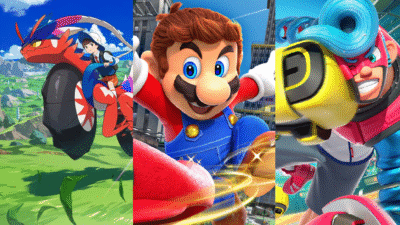At a time when many chains are feeling crunched, CAVA is a well-oiled machine.
Same-store sales grew 10.8 percent, fueled by 7.5 percent growth in traffic. Bottom income strata are outperforming, and restaurants are seeing strength across lunch and dinner. Adjusted EBITDA was $44.9 million, a 34.6 percent rise over Q1 2024, and net income was $25.7 million, an 83.7 percent boost over last year. It’s arguably the best-performing first quarter of any public quick-service chain this year.
On a trailing 12-month basis, CAVA surpassed $1 billion in revenue for the first time.
“If you look over the last 15 years, traffic has been negative in the industry all but one year, and that was a bounce back coming out of the pandemic. So, it has been the case for many years that you are competing for market share. And our traffic has proven over time, and the positive traffic growth we’ve had in recent quarters, that people are choosing CAVA when they are eating out,” CEO Brett Schulman said during the chain’s Q1 earnings call. “And we have to prove every day why we are better than the three or four restaurants next to us. And we’ve been able to do that in recent quarters.”
READ MORE:
Add ‘Value’ to the Restaurant Categories CAVA is Winning
How CAVA is ‘Meeting the Moment for the Modern Consumer’
CAVA CEO Sees ‘Tipping Point’ for Mediterranean Segment as Sales Soar
There are no weaknesses in specific markets, income ranges, or restaurant formats. No region has an AUV below $2.6 million. When looking at the top decile of restaurants—which earn above $4 million AUV and restaurant margins of over 30 percent—there’s representation from all parts of the country, all types of formats, and all income demographics. There is no singular factor creating those favorable results. It’s all working.
The biggest difference between these top stores and bottom ones is that the higher-earning outlets are older. It doesn’t necessarily come down to operations, better-performing remodels, or ineffective trade areas.
“When we look at our restaurants based on quartiles, the bottom quartile of restaurants have younger restaurants in them overall,” CFO Tricia Tolivar said. “So, it’s really more of a maturation cycle than it is anything else in bringing those restaurants to the average and above average AUVs that we’re able to deliver.”
New markets are performing well too. Tolivar said CAVA is “seeing great results” in all openings in 2025 and that they’re just as successful as 2023 and 2024, if not more.
“So, in Indianapolis, in Fishers, that restaurant is performing very well, as well as our restaurants in South Florida,” Tolivar said. “But take our restaurant in Lafayette, Louisiana—that’s exceeding expectations too. It’s just really demonstrating the power of the brand and our ability to really expand many other places across the country and leverage that enormous white space opportunity that’s ahead of us.”
CAVA is working to make its restaurants even more efficient. A major initiative is the Connected Kitchen, which features kitchen display systems that have shown more accuracy and increased guest satisfaction. Also, restaurants can control how many orders they accept every 15 minutes. The new system gives them the ability to increase that limit if they can handle more volume.
The technology is live in 42 locations. CAVA hopes to deploy the Connected Kitchen to 250 stores by the end of 2025.
The fast casual recently added onto its Connected Kitchen with AI video technology, which completed its test-and-learn phase and is now in four restaurants. The innovation includes a “grill assistant” that helps employees determine how much food is needed based on real-time and historical data, and a “prep assistant” that helps streamline prep production.
“As it relates to the KDS, we don’t give specific throughput or productivity numbers, but what we can say is that the new kitchen display screen systems allow for much richer, deeper order management capabilities, including increased productivity,” Schulman said.
Another priority is Project Soul, CAVA’s mission to elevate its dining room experience with natural light, softer seating, enhanced greenery, and warm inviting tones. As for digital customers, CAVA has seen significant momentum since the launch of its updated loyalty program, which moved from a “Spend X, get Y” model to an “earn and bank points” system. The switch has led to more guest engagement and participation.
Sales are up 340 basis points and total membership is approaching 8 million. CAVA is pushing north of 50,000 registrations per week, Schulman said. The next step is testing a new tiered structure to reward guests based on their frequency patterns.
For employees, CAVA rolled out a new labor deployment and scheduling model late in 2024, which has increased productivity across lunch and dinner.
“It’s to make our restaurants easier to run so the shifts aren’t as frenetic, that the teams are in position, guest facing, that our general managers are not jumping the line or jumping into the back to fill a hole or a gap to prep, that the prep is oriented before and after shifts, and that they can coach and lead the teams,” Schulman said. “And that it frees our team members up to deliver that human connection and get out into the dining room, do table touches, have more guest-facing interaction, and have a less stressful shift. So, we’re very pleased with what we’ve seen to date.”
CAVA finished Q1 with 382 restaurants after opening a net of 15 in the quarter. It entered Indiana for the first time; up next is Detroit and Pittsburgh. The fast casual is now based in 26 states and Washington, D.C. The chain’s overall goal is to reach 1,000 units by 2032, and Schulman believes it’s well on pace to do so.
“In a fluid macroeconomic environment, our performance this past quarter underscores the strength of our value proposition and the enduring relevance of our brand,” Schulman said. “At a time when tomorrow feels unclear to many, our ability to deliver bold, flavorful, health-conscious food paired with convenience and genuine human connection is a strategy for success.”



